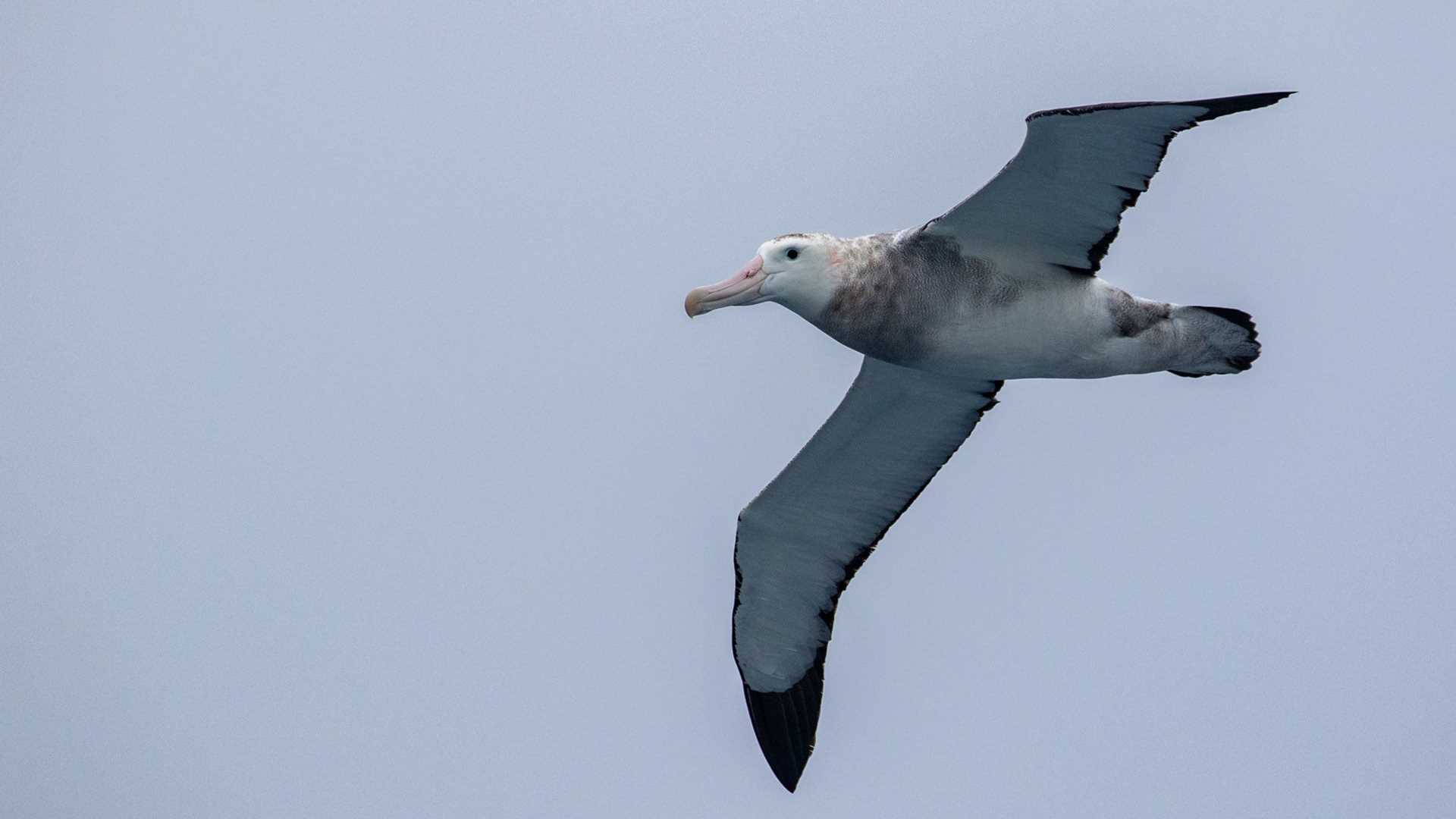National Geographic Resolution sailed west toward the Falklands immersed in fog. Birders were teased all morning with brief views of small petrels and albatrosses zipping in and out of visibility. After listening to naturalist Rob Edwards talk geology, guests headed outside. They were delighted to see that the fog had lifted, and three wandering albatrosses cruised effortlessly above the wake of the ship. It was the smaller birds that stole the show, though, with grey petrels, great shearwaters, and soft-plumaged petrels all showing off their agility in the winds. As the day progressed, we were joined by the first skuas of the passage, a sure sign that we are getting close to land.
3/12/2025
Read
National Geographic Endurance
At Sea towards Ushuaia
It was a day for reflection. Our journey was coming to an end as we left the Falklands behind and National Geographic Endurance steamed towards South America and Ushuaia. The seas were kind to us, and despite low winds, we had black-browed albatross, among other birds, around us. In the morning, we listened to the naturalists onboard as they presented on different subjects in the ice lounge. Land-ho! Mid-morning we had land in sight, South America was appearing on the horizon. Upon entering the Beagle Channel, we saw possibly a hundred sei whales. While the seabirds were waiting for the wind on the surface, the whales were feeding a short distance from the ship. As our vessel waited for the pilot to arrive, we could still see whale blows in the distance. We enjoyed a teatime extravaganza with Chef Sara and her team. Cheese and wine brought most of the ship’s inhabitants to deck 8, and while sipping wine we watched sea lions, dolphins, and stunning views of Tierra del Fuego go by until it was time for Captain Aaron’s farewell toast. As much as we are reflecting on our expedition today, it has also been a day of celebration! It has been an incredible journey of many miles, great people, and wonderful experiences. Thank you all!







